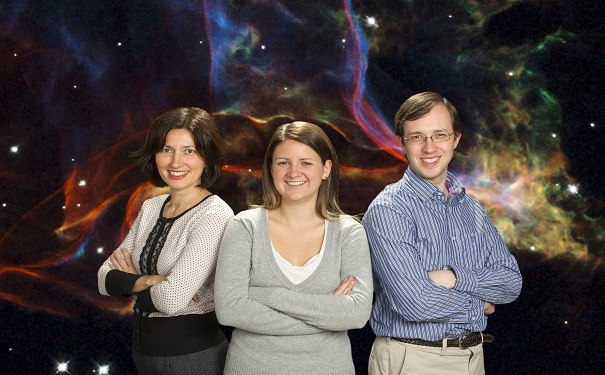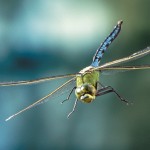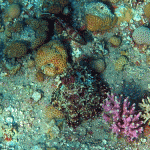
Dr Jasmina Lazendic-Galloway, Amelia Fraser-McKelvie and Dr Kevin Pimbblet. Image: Monash University.
Scientists have been searching for the missing mass for decades.
Amelia Fraser-McKelvie isn’t a career researcher or a PhD student. She’s actually a 22-year-old undergraduate Aerospace Engineering/Science student who managed to find some of the Universe’s missing mass during a summer scholarship.
Ms Fraser-McKelvie was chosen from a large number of students to work in a team within the School of Physics at Monash University. Working with two astrophysicists, Dr Kevin Pimbblet and Dr Jasmina Lazendic-Galloway, she conducted a targeted X-ray search to track down the missing mass.
Scientists have predicted that the amount of matter in the local Universe should be about double of what has been observed so far. Dr Pimbblet explained “The missing mass was thought to be in the form of hot (X-ray emitting), diffuse gas, located in filaments. “The first two points mean that although it should be detectable using X-ray telescopes, it is going to be faint and noisy.”
The mass was also predicted to be low density and high in temperature- approximately one million degrees Celsius- which meant it could, in theory, be located using X-rays. Ms Fraser-McKelvie has proved these theories right, as within three months she had managed to find some of the filaments using X-rays.
She says the “˜Eureka’ moment came after Dr Lazendic-Galloway examined the data collected. “Using her expert knowledge in the X-ray astronomy field, Jasmina reanalysed our results to find that we had in fact detected the filaments in our data, where previously we believed we had not.” Ms Fraser-McKelvie said in the press release.
This breakthrough discovery in determining the amount of mass contained in the filaments, as scientists have been making deductions based on numerical models until now.
Although she is still a year away from undertaking Honours, Ms Fraser-McKelvie’s work has been published in the prestigious scientific journal Monthly Notices of the Royal Astronomical Society, a terrific achievement for an undergraduate. “Being a published author is very exciting for me, and something I could never have achieved without the help of both Kevin and Jasmina.” she said.
“Their passion and commitment for this project ensured the great result and I am very thankful to them for all the help they have given me and time they have invested.”







Ian
May 27, 2011
The abstract indicates that they got measures of electron density, surface brightness distributions for more detailed models, as well as confirming low density mass distribution.
ella
November 6, 2011
wow she’s amazing!
im doing her for my science project